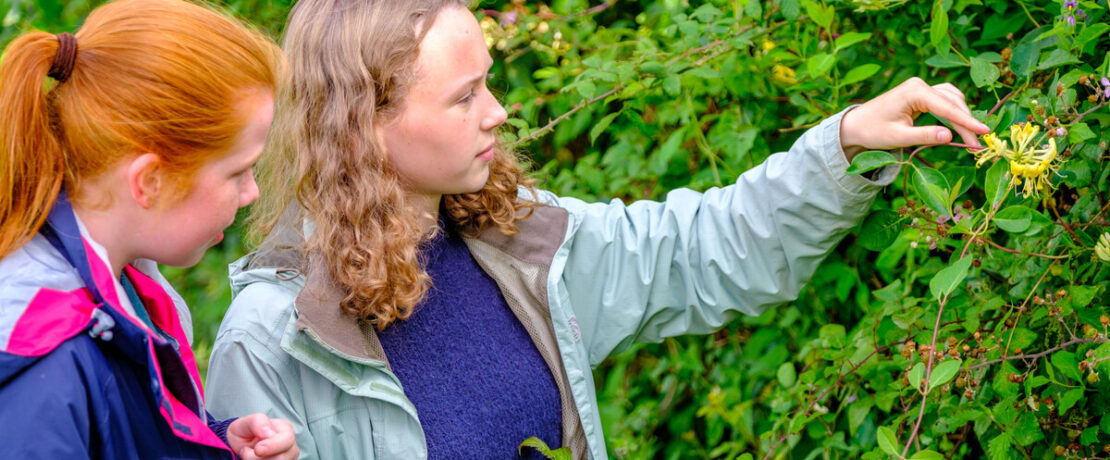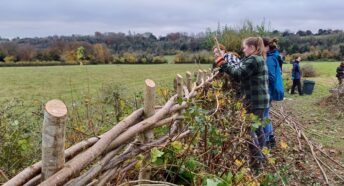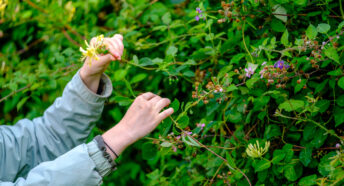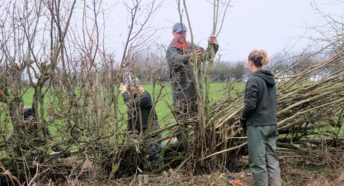The Hedgelife Help Out results are in!
With over 2,100 submissions, CPRE’s Hedgelife Help Out project (in collaboration with The Tree Council) proved to be a huge success. What’s more, a vast majority found it great for wellbeing and felt more connected to nature.
We were delighted with the enthusiasm that so many of you showed in taking part in our inaugural ‘Hedgelife Help Out’ project during May, as part of the wider Big Help Out initiative.
The project was based around an area we care about a lot – hedgerows. It took the form of a straightforward ‘survey’ and asked people to go out and spend time near a hedgerow, reporting back what they saw, the wildlife they found, and how the experience made them feel.
We wanted to create an accessible citizen science project that not only gave us some insight into the state of hedgerows across the country, but also helped people connect with nature. We’re now pleased to report the top line results from the survey.
Boost to nature connection
One of the most overwhelming takeaways from the results was just how much people got out of just taking part. We need more citizen science projects like this to help us understand the full environmental picture, and we were delighted to see how much it boosted people’s feelings about being connected to nature.
Of all who responded, 70% of participants found the project either good or great for their wellbeing. In addition, when asked whether the project helped people feel closer to nature, 72% agreed at the highest and second to highest scale.
We were also interested to see that the majority of people took part in the project alone (79%) followed by 15% taking part with friends or family. Despite the company that participants shared (if any), it was encouraging for us to see not only such a strong number of participants for the project’s first year but also that it had a positive impact on most of them.
The hedges themselves
Now we move on to the hedgerow analysis. We tried to keep the questions easy and accessible so that as many people as possible could take part. In the hedgerows surveyed, the results are broadly encouraging – though it’s important to acknowledge some of the biases in the data which you can read about at the end of the article.
Hedgerow blossom
81% of entrants reported that they saw blossom on the hedges they surveyed. This suggests that the hedgerows surveyed are being carefully managed and being allowed to blossom, which is great news for pollinators in those areas. It’s also great for birds and small mammals, as assuming those flowers eventually become fruit, they’ll have food for autumn and winter!
Unmown grass
73% of participants reported that there was at least one metre of unmown grass running alongside the hedge. The base of well-managed hedgerows are fantastic floral habitats, and are home to a variety of ‘woodland-edge’ plants. These plants provide food for pollinators and insects, and shelter for small mammals.
We know that there could be some local variation here, for example, some areas have hedges alongside ditches so there may not be a grassy margin.
Hedgerow trees
We asked people whether they saw any trees taller than the hedge in their survey area. 81% said yes and 19% said no. In general, a hedgerow with trees is better for biodiversity because it makes for a more diverse habitat, with different heights, shelters and food sources. Intensive management such as hedgerow flailing can stunt the growth of emerging trees. One solution to allow for future hedgerow trees to grow is to tag them to prevent accidental damage.
Leaf shapes
We asked people whether they saw more than five different leaf shapes in their surveyed hedge, to help us get an insight into the species richness of the hedgerow. 71% of participants said yes, and 29% said no, with the biggest number of ‘yes’ responses in the South West and South East. The best hedges are species-diverse, with five or more different hedge plants in a hedgerow.
Hedge height
When asked if the hedgerow they were looking at was taller than them, 82% said yes. One of the main influences on hedge height is its management. Some hedges are managed to grow incrementally higher, and others are cut at the same height each time. Tall hedges are important, but of equal importance is their bushiness. Higher hedges were generally more commonly reported in the south of England.
Hedgerow connectivity
We asked people whether the hedge they looked at had plants that touched all along the hedge; 87% said yes and 13% said no. Hedgerows that don’t have gaps along them are best for animals like dormice that don’t like to come down from hedgerow branches when moving around the countryside.
Hedge shape
The seventh question asked participants whether the hedgerow they surveyed had branches down to the ground: 88.5% said yes and 12.5% said no. Thick branching hedges are important at the bottom of the hedge to protect birds and small mammals from predators.
Birds and insects
We wanted to know whether participants had seen any birds or insects in the area around the hedgerow. A majority of participants saw between one and five birds (58%), 32% saw more than five, though 11% said they saw none. In the case of butterflies, bees and other insects, 82% said they spotted them but 18% said they didn’t. Of course, data here might have been skewed by several factors such as time of day and the weather. But, in general, there were encouraging signs that there was life around the hedgerows studied.
Megan Gimber of People’s Trust for Endangered Species, who worked with CPRE and The Tree Council on Hedgelife Help Out said ‘It’s great to see so many people engaging with and learning about their local hedgerows; looking at the structures, the blossom, the diversity and generally appreciating these awesome living habitats. The closer you look, the more amazing hedgerows become.’
Other takeaways
We want to highlight a couple of possible or actual biases in the data. For example, you’ll find quite quickly that the results paint a very positive picture of the state of our hedgerows. However, it’s important to point out that some participants may have selected a particularly nice-looking hedge. Perhaps many of our participants lived in areas where hedgerow management is wildlife-focused.
In addition, there was some skew in the regions that participated. Overall, the south of England (including London) accounted for 45.5% of all data; the midlands 19.2%; eastern England 12.4% and northern England 18.9%. Wales, Scotland and Northern Ireland had fewer people taking part, so the data is most representative of England. With a cold spring and wet summer, along with the data skew towards southern geographies, it’s possible that the hedges were further along, which is why the results appear encouraging.
Regardless of any skews, it’s clear that the hedges surveyed generally ticked a lot of boxes for biodiversity and overall health. Further, we were immensely encouraged by how positive an experience it was for so many of the participants. The results showed that the project helped a lot of people feel closer to nature, with huge wellbeing benefits to boot.
Get involved
Do you love hedgerows as much as we do? Get in touch with your local CPRE group! Nine groups are taking part in the 2023-4 phase of CPRE’s ‘Hedgerow Heroes’ project, which seeks to restore and plant hedgerows across England to boost biodiversity and climate change resilience.








